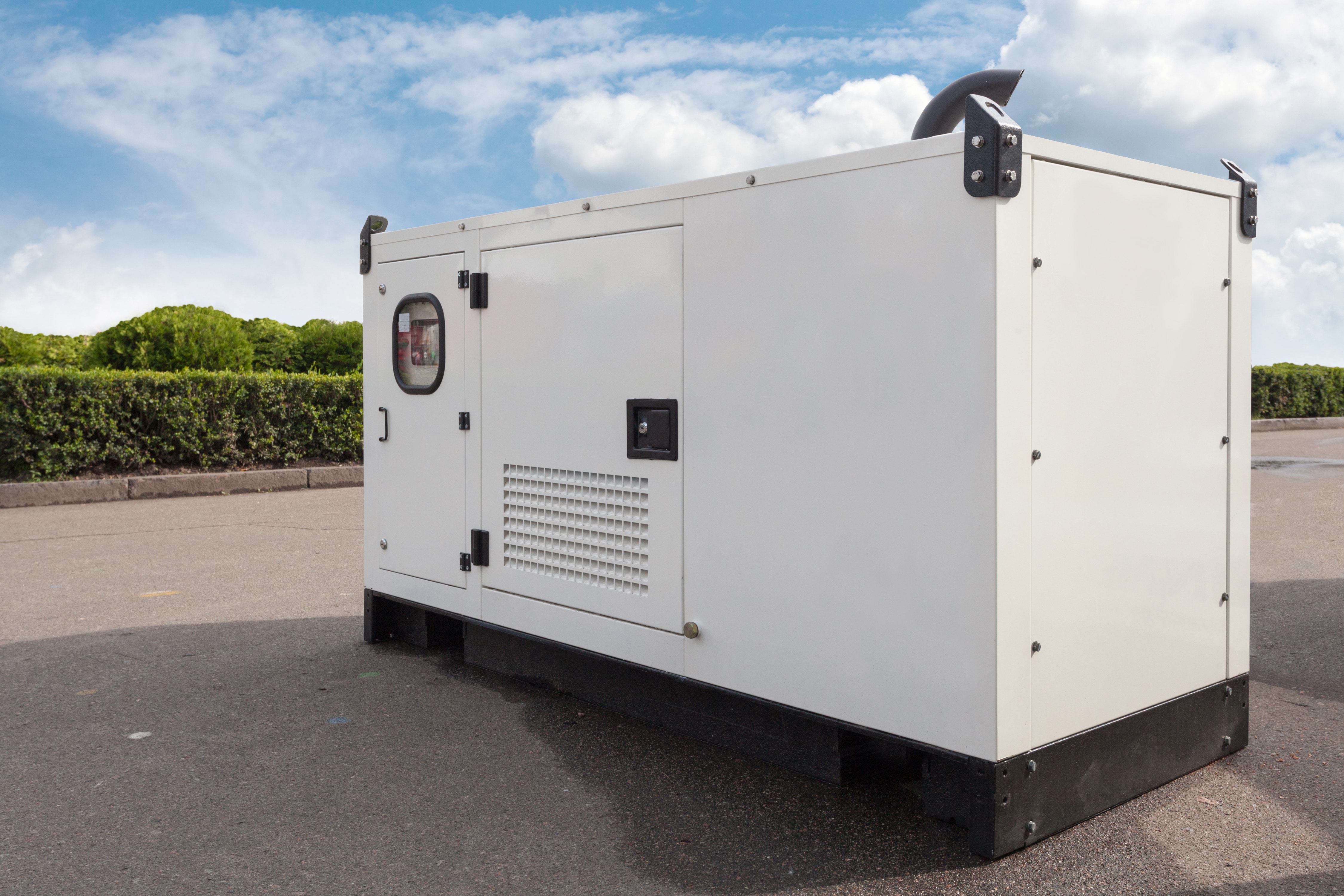Comprehensive Guide – Standby Power
Here on the right you have each part of this guide summarised. The full guide is below, broken into six detailed parts.

Part 1: Assess power protection needs and equipment classification. Evaluate business risks and categorize equipment based on power protection requirements.
Part 2: Size the generator for optimal performance. Consider power demand, synchronization, surge current, harmonics, temperature effects, and future loads when selecting the generator.
Part 3: Understand standby power and UPS system specifications. Differentiate between single-phase and three-phase electrical supplies. Consider cooling systems, power conditioning, and UPS technology options.
Part 4: Choose the right UPS and generator combination. Pair an on-line UPS with a properly sized generator. On-line UPS designs are compatible with generators and offer a double conversion process for reliable power supply.
Part 5: Choose the right generator. Consider modern generator advancements, diesel and natural gas options, weight considerations, exhaust and noise emissions, and remote monitoring services.
Part 6: Understand battery overheating and discharge cycles. Be aware of overheating causes and mitigate discharge cycles to prolong battery life. Choose the right battery type, consider alternative batteries, and configure batteries in series or parallel for improved system resilience.
Should you require any assistance with understanding this topic. Please get in touch, we are happy to help.
Step 1: Assessing Power Protection Needs and Equipment Classification
To develop an effective standby power strategy, it is crucial to evaluate the continuity and recovery requirements of your business. This involves considering the potential risks and consequences of power failures impacting critical systems.
- Evaluate Business Needs: Begin by understanding the potential dangers your business may face due to power instability or complete power loss. This assessment will provide a starting point for identifying power protection requirements.
- Categorize Equipment: Categorize each piece of equipment based on the level of power protection it requires. This classification will help determine the appropriate standby power solution for each system.
- Critical Systems: These systems must have uninterrupted power or operate for as long as possible without power disruptions. They typically require an uninterruptible power supply (UPS) to safeguard against even brief power interruptions.
- Sensitive Systems: These systems require a clean shutdown and cannot tolerate power fluctuations or delays in starting up a generator. A UPS system is needed to provide power during the shutdown process and potentially back up critical data.
- Essential Systems: These systems can withstand short power interruptions but still require power backup in the event of a failure.
- Other Loads: These loads, such as non-essential appliances like kettles or microwaves, can be allowed to fail without compromising critical systems, safety, or equipment integrity. They may not require standby power solutions.
By classifying equipment according to its power protection needs, you can tailor your standby power strategy to ensure the appropriate level of protection for each system.
Step 2: Sizing the Generator for Optimal Performance
Part 2 of this comprehensive guide focuses on sizing generators to ensure reliable and efficient power generation. Whether you need a generator for emergency backup power or remote locations without access to the electrical grid, understanding generator sizing principles is vital. This section explores key factors such as power demand, load types, and environmental conditions to assist you in selecting the right generator.
- Determining Generator Requirement: Identify situations where electrical equipment needs power beyond the runtime of the UPS. In such cases, a generator is necessary to provide a continuous power supply.
- Synchronization Considerations: During startup, generators require time to synchronize with the UPS electrical current. If a generator operates near its maximum capacity, there is a risk of load dropping. To prevent this, a larger generator size is recommended.
- Quick Checklist:
- Assess the impact of electrical equipment failures on your business.
- Determine the required level of power protection for each piece of equipment.
- Evaluate generator power loading based on anticipated power demand.
- Consider factors like surge current, UPS power efficiency, harmonics, synchronization, operating temperature, and future electrical loads.
- As a rule of thumb, the generator size should exceed the UPS power rating by a factor of 1.25 to 3.00 or more.
- Surge Current Consideration: Account for electrical inrush or surge current, which occurs when devices start up and consume more power than their normal working load. The generator should support the UPS power rating plus an additional 20%-30% to cover power conditioning during startup.
- Harmonics Impact: Harmonics are distortions in the AC electrical supply waveform. Consider the impact of harmonics on generator performance. Appliances designed to work at a specific frequency, such as 50Hz, should be taken into account.
- Temperature Effects: Temperature plays a significant role in generator performance. When the generator runs, a rise in temperature within the plant or engine room is expected. Higher ambient temperatures can be detrimental to the generator’s performance and longevity.
Part 3: Understanding Standby Power and UPS System Specifications
When it comes to Standby Power and UPS System Specifications, it is important to differentiate between single-phase and three-phase electrical supplies.
- Electrical Supply Types:
- Low-power UPS equipment typically operates on a single-phase input and output.
- Larger equipment is designed for three-phase input and output.
- Mid-range equipment commonly uses three-phase input with a single-phase output.
- Cooling Systems:
- Critical loads that cannot tolerate power breaks, such as servers, require UPS protection.
- Other critical systems like server room cooling systems can be protected using a generator to prevent thermal shutdown of servers due to cooling system failure.
- Power Conditioning:
- On-line UPS systems perform power conditioning, rectifying irregularities in the mains power supply.
- In the event of a complete power loss, the UPS uses its battery to maintain power flow until the generator takes over.
- On-Line/Double Conversion Technology:
- On-line UPS systems offer the highest level of power protection.
- They convert incoming mains AC power to DC power, which charges the battery and powers the inverter.
- The inverter converts the DC back to AC, providing a clean and regulated AC output to the load.
- The battery remains in the circuit, ensuring uninterrupted power supply during mains failure.
- A static bypass circuit serves as a failsafe mechanism, providing AC mains to the load during overload or internal faults.
- On-line UPS systems are recommended for use with generators due to their tolerance to voltage and frequency variations.
- Offline/Standby Technology:
- Offline/standby UPS systems provide basic protection against mains issues.
- Mains power passes through the UPS, which offers RFI filtering and limited spike protection.
- During a mains failure, the inverter starts up and supplies power to the load, causing a brief transfer interruption.
- Output during inverter operation is typically a square wave or stepped sine wave.
- These units are suitable for single PC/workstation and home office applications.
- Line-Interactive Technology:
- Line-interactive UPS systems provide more protection than offline UPS systems.
- They offer superior spike protection and have a wider tolerance to voltage variations.
- These UPS systems use a voltage trimming transformer to adjust the incoming AC mains voltage.
- In the event of a mains failure or voltage outside operating limits, the inverter starts up and supplies power to the load.
- The output waveform is usually a sine wave.
Understanding the specifications of UPS systems is crucial when selecting the right solution for your power backup needs. Consider the type of electrical supply, cooling system requirements, power conditioning capabilities, and technology options like on-line, offline, and line-interactive UPS systems. By evaluating these factors, you can ensure reliable power protection for your critical loads. If you need assistance or have any questions, feel free to reach out for guidance and support.
Part 4: Choosing the Right UPS and Generator Combination
To ensure a well-matched and reliable power solution for mission-critical IT applications, it is important to pair an on-line UPS with a properly sized generator. Here’s why this combination works best:
- On-line UPS Compatibility:
- On-line UPS designs are highly suitable for use with generators.
- They can accept input power with wide variations in voltage and frequency, making them flexible in different power supply scenarios.
- Double Conversion Process:
- An on-line UPS employs a double conversion process.
- The AC input from either the mains or a standby generator is first converted to DC by the rectifier, which charges the battery.
- During a power outage, the DC current from the batteries is transformed back into a perfect sine wave AC by the inverter, ensuring a clean power supply to critical loads.
- Some newer models also incorporate power factor correction to handle an even wider input voltage range.
- Frequency Variations:
- Due to the double conversion process, variations in the input frequency have minimal impact on the on-line UPS.
- Unlike off-line or line-interactive UPS systems that may transfer to battery power in response to frequency variations, the on-line UPS remains unaffected.
Matching Accessories for Added Assurance:
- To enhance the performance and protection of the power system, additional components can be considered.
- An electronic governor on the generator helps regulate the engine speed, ensuring stability and consistency in power output.
- An in-phase monitor on the automatic transfer switch helps synchronize the generator with the UPS, facilitating a seamless transfer of power.
Part 5: Choosing the Right Generator
Making the right generator choices is crucial when selecting a backup power solution. Here are some key factors to consider:
- Modern Generator Advancements:
- Modern generators offer advantages such as turbocharging, smaller size, improved efficiency, and faster response times.
- They can supply up to 100% load within seconds and are available in a wide range of fuel options.
- Diesel Generators:
- Diesel generators are the most common choice due to their low flammability, fuel stability, and cost-effectiveness.
- They are often the preferred option for capital expenditure considerations.
- Natural Gas Generators:
- Natural gas generators are an alternative choice where the fuel is readily available.
- They require larger engines compared to diesel equivalents to compensate for the lower calorific value of gas.
- One advantage is that natural gas generators do not require a fuel tank as they can draw fuel directly from the gas main.
- Weight Considerations:
- Generator weight is an important factor to consider, especially for indoor or elevated installations.
- A 100kVA generator typically weighs around 1.7 metric tonnes, excluding fuel.
- Load-bearing capacity and accessibility for refueling should be evaluated for installation sites within buildings or on rooftops.
- Exhaust, Noise, and Heat Emissions:
- Internal combustion engines produce exhaust emissions and noise that need to be managed.
- Proper ventilation and exhaust pipe design are essential to ensure safe emissions dispersal.
- Noise can be mitigated using acoustic hoods and weather-proof enclosures.
- Diesel generators usually require air cooling, and additional forced cooling and ventilation may be necessary in their immediate environment.
- Remote Monitoring:
- Remote monitoring services offer valuable maintenance options for generators.
- These services provide continuous monitoring during operation, including weekly auto-start procedures.
- They can send notifications via SMS or email for successful test runs, mains failures, common alarms, and low fuel levels.
Part 6: Understanding Battery Overheating and Discharge Cycles
Overheating Causes:
- Battery temperatures can rise due to external ambient temperature and heat generated during battery operation.
- During discharge, batteries absorb heat, while during charging, they release heat at a rate of 0.02 watts per Ah per 12V DC.
- To prevent overheating and thermal runaway, a minimum 10mm gap should be maintained between battery blocks when installed in racks.
Discharge Cycles:
- The number of discharge-recharge cycles significantly affects battery life.
- Battery contact deterioration is the primary cause of reduced battery life during discharge cycles.
- Mitigate UPS activity fluctuations to avoid frequent discharge cycles and extend battery life.
Ensuring UPS Battery Reliability:
- Choose the right battery type: Valve regulated lead-acid (VRLA) batteries are commonly used due to their safety features, replacing older open vented batteries.
- Consider alternative batteries: Nickel-Cadmium (Ni-Cad) batteries offer wider temperature range and durability but require proper disposal due to hazardous cadmium content. Gel batteries are suitable for low-temperature environments.
- Proper battery configuration: Batteries are grouped into blocks, and these blocks can be connected in series or parallel to achieve the required voltage and capacity.
- Series configuration: Connecting battery blocks in series increases the overall voltage while maintaining the same capacity.
- Parallel configuration: Multiple series strings wired in parallel increase the ampere-hour (Ah) rating and runtime of the UPS, enhancing system resilience.
Benefits of Parallel Battery Strings:
- Improved system resilience: Parallel configuration protects against the failure of a single faulty battery, reducing the risk of standby power system failure.


Get in touch if you are looking at implementing a backup power protection strategy

